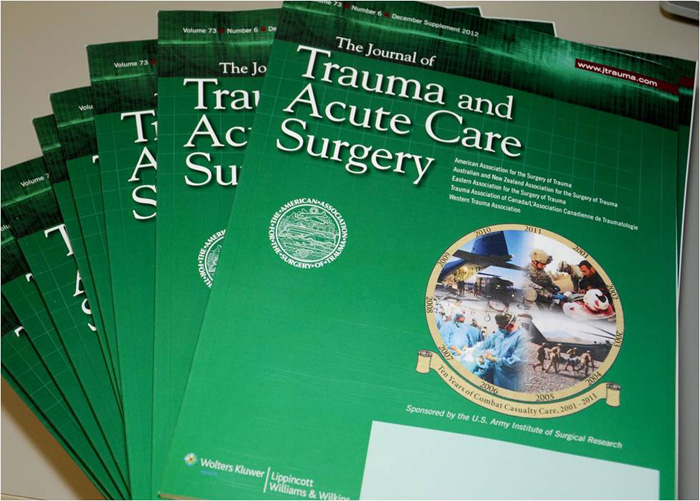Medical revolutions highlighted in 10-year supplement
The U.S. Army Institute of Surgical Research announced the release of a capstone publication in the Journal of Trauma and Acute Care Surgery summarizing key medical advances from the war-time experience of the U.S. military. As a subordinate command of the U.S. Army Medical Research and Materiel Command at Fort Detrick, Md., the ISR strives to be the nation's premier joint research organization planning and executing registry-based and translational research providing innovative solutions for burn, trauma, and combat casualty care from the point of injury through rehabilitation.
The publication describes a triad of military medical revolutions in three key areas of military trauma medicine; pre-hospital care, deployed hospital care, and trauma systems and restorative medicine. Together these articles provide an important milestone in military medical care and highlight how the lessons learned in war have translated to improving trauma care delivered in U.S. civilian trauma centers.
"The goals of this supplement are twofold, to document the landmark medical advances from this war and to document the gaps along the continuum of combat casualty care from a historical perspective so that in the future medical personnel can bridge these gaps and save lives," said senior editor of the supplement and former ISR Commander, Col. (Dr.) Lorne H. Blackbourne. "Documenting the revolutionary advances from these wars can help with the translation of military advances to civilian trauma care so that all Americans can benefit in addition to our wounded warriors."
"This supplement documents the extraordinary progress in saving lives on the battlefield that combat casualty care research has affected during the last decade," the Director of ISR Combat Casualty Care Research Directorate, David G. Baer, Ph.D.
In order to ensure the widest distribution possible, the Journal of Trauma has made these three articles available on an open-access basis at
http://journals.lww.com/jtrauma/toc/2012/12005 . These articles are supported by focused reviews of tactical combat casualty care, analysis of the peer-reviewed combat trauma literature, burn care, coagulation monitoring, causes of death on the battlefield, amputations, blood product use, head and neck injuries, trauma training programs, innovations in treatment for pain, and moderate to severe brain injury.
. These articles are supported by focused reviews of tactical combat casualty care, analysis of the peer-reviewed combat trauma literature, burn care, coagulation monitoring, causes of death on the battlefield, amputations, blood product use, head and neck injuries, trauma training programs, innovations in treatment for pain, and moderate to severe brain injury.
"The best way to optimize and direct research and trauma system efforts for the greatest good is evidence-based information on the burden of injury and capability gaps extrapolated from outcome data'the publications in this supplement provide the data to help guide all future efforts in these areas," said Blackbourne, the current director of the U.S. Army Trauma Training Center in Miami.
Together these articles document extraordinary progress in saving lives on the battlefield, and highlight areas for continued innovation and translation of military medical expertise to saving the lives of civilian trauma victims.
"We're dedicated to optimizing combat casualty care," said ISR Commander, Col. (Dr.) Michael A. Weber. "The research that we are conducting at this Institute is saving lives'on and off the battlefield."















